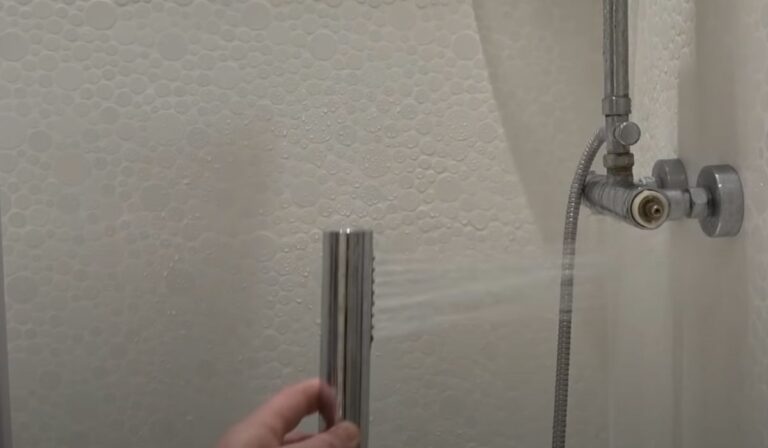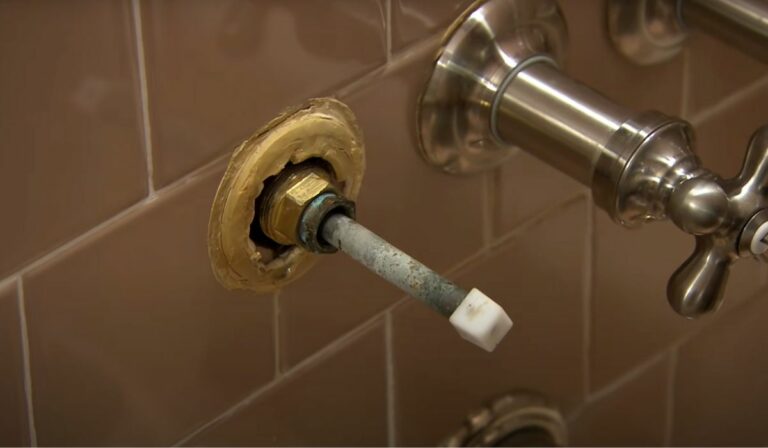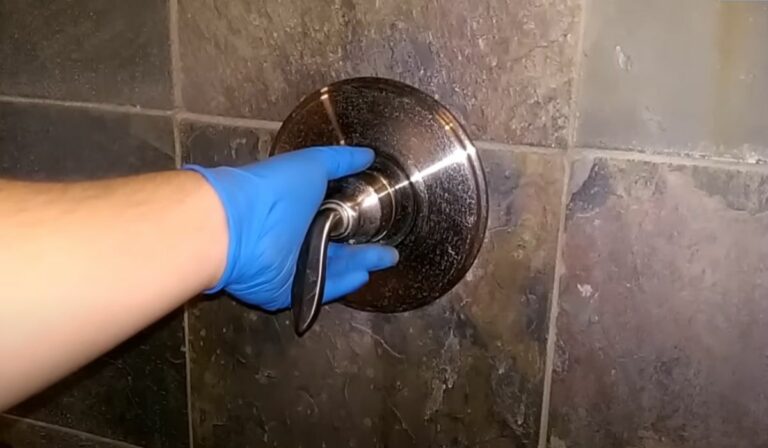Where Does Shower Water Come From
Your shower water starts as rain or snow that collects in rivers, lakes, or underground aquifers. This water is filtered and treated to remove impurities and harmful bacteria before it gets stored in reservoirs. From there, it travels through a complex system of pipes, pumps, and valves to reach your home safely and continuously. The water system constantly checks quality to ensure your shower is refreshing and safe. There’s more to explore about how it all works seamlessly.
Natural Sources of Water
Although you mightn’t often think about where your shower water comes from, it usually starts as natural water sources like rivers, lakes, and underground aquifers. These sources collect rainwater and melting snow, forming freshwater reserves essential for daily use.
You rely on these bodies of water because they provide large quantities of clean water that treatment plants can process. For example, rivers continuously flow, bringing fresh water downstream, while lakes act as storage basins holding water over time.
Even though underground aquifers play a significant role, you’ll learn more about them later. For now, know that these natural sources are vital to supplying the water you use every day, ensuring you have enough for showering, cooking, and drinking.
Groundwater and Aquifers
Where does much of your shower water come from when it’s not directly from rivers or lakes? A lot of it comes from groundwater stored in aquifers beneath the Earth’s surface. These aquifers are like natural underground reservoirs made of porous rock or sand that hold water.
When it rains or snow melts, water seeps down through the soil and fills these spaces. You tap into this stored water through wells drilled deep into the ground. Your local water system then pumps it out, treats it, and sends it to your home.
Groundwater is a crucial source because it’s often cleaner and more reliable than surface water, especially during dry periods. So, every time you shower, you’re likely using water that’s traveled deep underground before reaching you.
Surface Water: Lakes and Rivers
Besides groundwater, a significant portion of your shower water comes from surface water sources like lakes and rivers. These bodies of water collect rain and runoff, storing vast amounts of fresh water that utilities draw from daily.
When you turn on your shower, water from these lakes and rivers travels through pipes, making its way to your home. Because lakes and rivers are exposed to the environment, the water levels can fluctuate with the seasons, weather, and human activities.
This means the availability of surface water can vary, but it remains a crucial resource for many communities. Understanding that your shower water often starts its journey in these natural reservoirs connects you to the larger water cycle happening all around you.
Water Treatment Processes
Before water reaches your showerhead, it undergoes several treatment processes to ensure it’s safe and clean. First, large debris like leaves and sediment are removed through screening.
Then, the water settles in tanks, allowing finer particles to sink. After that, chemicals called coagulants are added to clump smaller impurities together, making them easier to filter out.
You’ll also find that the water passes through filtration systems to catch any remaining particles. Finally, disinfectants like chlorine or chloramine are introduced to kill harmful bacteria and viruses.
These steps work together to provide you with water that’s not only clear but also free from contaminants, so you can enjoy your shower without worry. This process is essential for maintaining public health and water quality.
Water Purification Techniques
How do water purification techniques ensure the water you use is truly safe? They remove harmful contaminants and pathogens that might linger after initial treatment.
You’ll find methods like filtration that trap particles, activated carbon that absorbs chemicals, and UV light that destroys bacteria and viruses. Sometimes, processes such as ozonation introduce ozone to neutralize organic material.
These techniques work together to eliminate impurities, making your shower water clean and safe. They also help maintain the water’s taste and smell, so you don’t notice any unpleasant odors or flavors.
Distribution Systems and Infrastructure
Where does your shower water come from after purification? It travels through an extensive distribution system made up of pipes, pumps, and valves that deliver water right to your home.
Once purified, water enters large main pipelines that branch out into smaller pipes woven throughout your neighborhood. These pipes maintain pressure using strategically placed pumps, ensuring water flows steadily to your showerhead.
The infrastructure includes materials like ductile iron or PVC, chosen for durability and safety. You rely on this network to provide consistent, clean water without interruptions.
Regular maintenance keeps leaks and contamination risks low, so you always get fresh water. Understanding this system helps you appreciate the complex journey your shower water takes before it reaches you.
Water Storage Facilities
Although you mightn’t see them often, water storage facilities play a crucial role in ensuring your shower water is available whenever you need it. These facilities, such as reservoirs and water tanks, hold large quantities of treated water ready to supply your home.
They act as buffers, balancing demand fluctuations and emergencies like fires or power outages. When you turn on your shower, the water doesn’t come directly from the treatment plant but often from these storage points, ensuring consistent pressure and availability.
Without them, sudden spikes in water use or disruptions in supply could leave you without water. So, next time you enjoy a warm shower, remember that these hidden storage systems work nonstop behind the scenes to make it possible.
The Role of Water Utilities
What ensures that clean, safe water flows steadily to your shower every day? Water utilities play a crucial role in this process. They manage the entire water supply system, from sourcing water to delivering it right to your home. These utilities treat raw water to remove contaminants and monitor its quality continuously.
They maintain extensive networks of pipes, pumps, and treatment plants to ensure reliable delivery. When you turn on your shower, water utilities have already worked behind the scenes, balancing demand and supply. They also respond quickly to leaks or issues, preventing interruptions.
Without water utilities coordinating these efforts, you wouldn’t enjoy the consistent, safe water supply you rely on daily. They make sure every drop meets health standards before it reaches your showerhead.
Factors Affecting Water Quality
Since water quality directly impacts your health and comfort, understanding the factors that affect it is essential. Several key elements influence the water you use in your shower.
Source contamination, such as pollutants from agriculture or industry, can introduce harmful substances. Seasonal changes and weather patterns also play a role, affecting water clarity and chemical balance.
The condition of local infrastructure, like pipes and treatment facilities, impacts water purity by preventing or allowing contaminants. Additionally, natural mineral content varies by region, altering taste and hardness.
Water treatment processes aim to remove impurities, but their effectiveness depends on these external factors. By knowing what influences water quality, you can better appreciate the importance of proper water management and treatment in keeping your shower water safe and enjoyable.
How Water Reaches Your Home
Before the water reaches your showerhead, it travels through a complex system designed to deliver clean, safe water right to your home. It starts at a water source like a reservoir, river, or underground aquifer, where it’s collected and treated to remove contaminants.
From there, water moves through a network of pipes and pumps maintained by your local water utility. These pipes carry it under pressure to your neighborhood, then through smaller service lines to your house.
Once inside, water flows through your home’s plumbing system, reaching faucets, showers, and appliances. Throughout this journey, the system ensures water remains safe and reliable so you can enjoy a refreshing shower whenever you want.
Understanding this process helps you appreciate the convenience of clean water on demand.
Frequently Asked Questions
Can Shower Water Temperature Affect Skin Health?
Yes, shower water temperature can affect your skin health. Hot water can strip natural oils, causing dryness and irritation, while lukewarm water helps maintain moisture. You should avoid very hot showers to keep your skin healthy.
How Much Water Does an Average Shower Use?
An average shower uses about 2.1 gallons of water per minute. So, if you shower for 10 minutes, you’ll use roughly 21 gallons. Shorter showers can help you save water and reduce bills.
Are There Eco-Friendly Showerheads to Save Water?
Yes, you can get eco-friendly showerheads that save water by limiting flow without sacrificing pressure. They help you cut water use and lower bills, so you’ll feel good about conserving resources every time you shower.
Does Shower Water Contain Chlorine or Other Chemicals?
Yes, your shower water usually contains chlorine and sometimes other chemicals used to disinfect it. If you want to reduce exposure, you can install a water filter or choose eco-friendly showerheads that minimize chemical use.
How Can I Prevent Mold in My Shower Area?
You can prevent mold by keeping your shower dry, using a squeegee after each use, ensuring proper ventilation, cleaning regularly with mold-killing solutions, and fixing leaks promptly. Don’t let moisture linger to stop mold growth.
Conclusion
Now that you know where your shower water comes from, you can appreciate the journey it takes—from natural sources like groundwater, lakes, and rivers, through treatment and purification, to storage and delivery by water utilities. This complex process ensures the water reaching your home is safe and clean. Understanding these steps helps you value the resources and efforts involved every time you turn on the tap for a refreshing shower.



